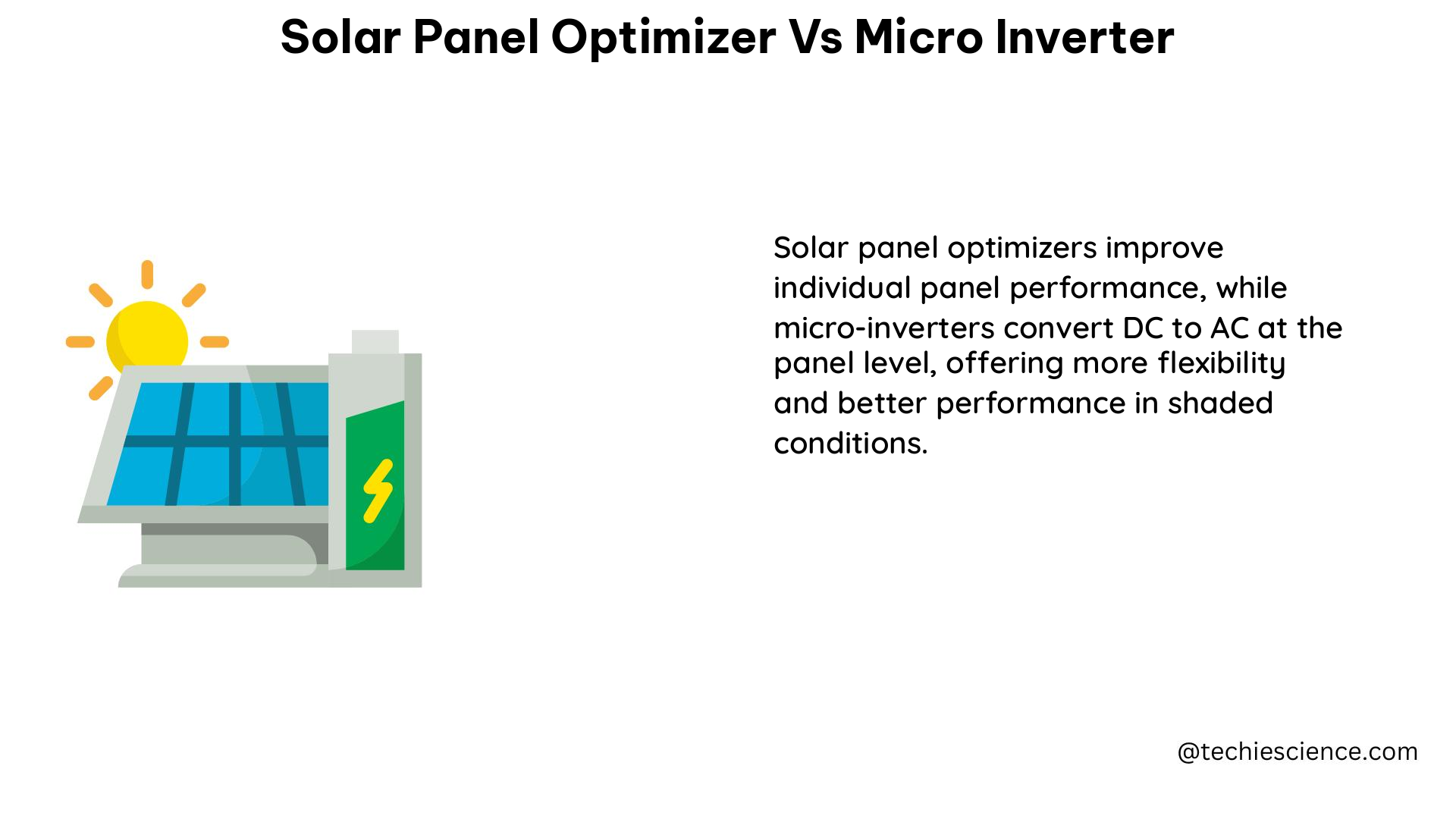Solar panel optimizers and micro inverters are two types of module-level power electronics (MLPEs) that are used to optimize the energy production of solar panels, especially in non-ideal conditions such as shading. These technologies offer distinct advantages and disadvantages, and the choice between them depends on the specific requirements and characteristics of the solar installation.
Efficiency: Maximizing Power Output
Both microinverters and power optimizers improve the efficiency of solar panels, but microinverters offer a slight edge in output maximization for each panel. This is due to their independent inversion of DC to AC, which allows them to optimize the power output of each individual panel.
Microinverters typically have an efficiency range of 95-97%, while power optimizers have an efficiency range of 92-96%. The higher efficiency of microinverters can translate to a 2-5% increase in overall system output compared to power optimizers.
Cost: Balancing Investment and Benefits

Power optimizers are generally more cost-effective than microinverters. The initial investment and installation costs for power optimizers are lower, making them a more attractive option for budget-conscious solar installations.
The average cost of a power optimizer ranges from $150 to $300 per panel, while the cost of a microinverter can range from $200 to $400 per panel. Additionally, the installation of power optimizers is typically simpler and less labor-intensive, further reducing the overall cost.
Environmental Conditions: Adapting to Diverse Scenarios
Microinverters excel in highly variable environmental conditions due to their panel-by-panel optimization. They are ideal for roofs with complex designs, varying angles, or intermittent shading, as they can independently adjust the power output of each panel to maximize the overall system performance.
Power optimizers, on the other hand, are effective in shaded conditions but may not provide the same optimization level in complex roofing layouts. They are better suited for installations with uniform environmental conditions, such as a simple, unshaded roof.
Reliability and Maintenance: Ensuring Consistent Performance
Microinverters offer the advantage of independent operation, meaning a failure in one inverter doesn’t impact the entire system. The failure rate for microinverters is low, with approximately 1 in 1500 microinverters failing on average.
Power optimizers are simpler and may have a lower failure rate, but they still rely on a central inverter for DC to AC conversion. If the central inverter fails, the entire system is affected, which can lead to more downtime and maintenance requirements.
Shading Mitigation: Overcoming Obstacles
Microinverters are more effective at mitigating the impact of shading on individual panels. They can independently adjust the power output of each panel, ensuring that shaded panels don’t drag down the performance of the entire system.
Power optimizers also help with shading issues, but not as effectively as microinverters. They can improve the performance of shaded panels, but the overall system output may still be affected by the shaded panels.
Additional Considerations
-
Scalability: Microinverter systems are more scalable, as they allow for easy expansion by adding additional panels without the need to upgrade the central inverter. Power optimizer systems, on the other hand, are more limited in their scalability.
-
Monitoring and Control: Microinverter systems typically offer more advanced monitoring and control capabilities, allowing for panel-level performance tracking and remote troubleshooting. Power optimizer systems may have more limited monitoring options.
-
Safety: Microinverter systems operate at a lower DC voltage, which can be safer for installers and homeowners. Power optimizer systems still have high DC voltages, which may require additional safety precautions.
-
Aesthetics: Microinverters are typically mounted on the back of the solar panels, resulting in a cleaner and more streamlined appearance on the roof. Power optimizers are often mounted separately, which can impact the overall aesthetic of the installation.
In summary, the choice between solar panel optimizers and micro inverters depends on the specific requirements and characteristics of the solar installation. Microinverters offer a higher level of efficiency and shading mitigation, but at a higher cost. Power optimizers are a more cost-effective solution that still provides many of the benefits of microinverters, but they may not be as effective in complex roofing layouts. Carefully evaluating the factors discussed in this article can help you make an informed decision that best suits your solar energy needs.
References:
– Microinverters vs. Power Optimizers: Which is Right for Your Solar Installation?
– Microinverters vs Optimizers in Real World Use – Questions
– Microinverters vs. Optimizers: Which is Better for Your Solar System?
– Reliability Facts: String Inverter and Optimizers
– Solar Optimizer vs Micro Inverter: Which is Right for You?

The lambdageeks.com Core SME Team is a group of experienced subject matter experts from diverse scientific and technical fields including Physics, Chemistry, Technology,Electronics & Electrical Engineering, Automotive, Mechanical Engineering. Our team collaborates to create high-quality, well-researched articles on a wide range of science and technology topics for the lambdageeks.com website.
All Our Senior SME are having more than 7 Years of experience in the respective fields . They are either Working Industry Professionals or assocaited With different Universities. Refer Our Authors Page to get to know About our Core SMEs.